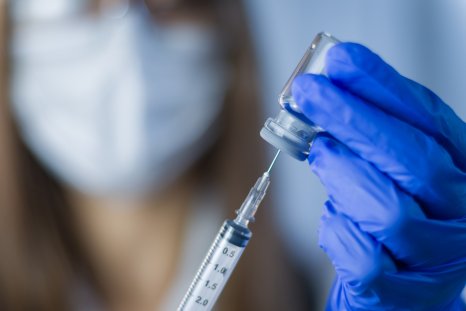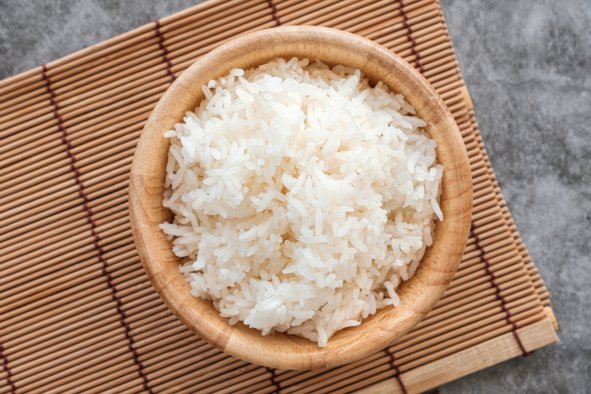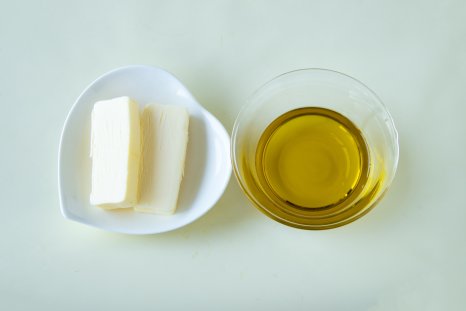Roughly two-thirds of adults around the world are not getting enough of four key nutrients, new research indicates.
The findings, published in the journal The Lancet Global Health, are part of a broader study investigating deficiencies around the world in 15 critical micronutrients and the implications for human health.
"These results are alarming," Ty Beal, senior technical specialist at the Global Alliance for Improved Nutrition and one of the study's co-authors, said in a statement.
"Most people—even more than previously thought, across all regions and countries of all incomes—are not consuming enough of multiple essential micronutrients. These gaps compromise health outcomes and limit human potential on a global scale," Beal said.
The study analyzed data from the Global Dietary Database, the World Bank and dietary surveys to estimate nutrient intake for 15 key vitamins and minerals across 185 countries. From these results, they found that more than 5 billion people globally are not getting enough iodine, vitamin E or calcium from their food, with more than 4 billion not getting enough iron.
But why are these nutrients so important, and what foods can we eat to make sure we are getting enough?
Iodine
Iodine is an essential mineral that our bodies need to make thyroid hormones. These hormones play an important role in regulating our metabolism, which in turn affects our ability to regulate our body temperature, heart health, brain development and body weight, among other things. And yet, 68 percent of the global population isn't getting enough of it, at least from diet.
It's important to point out that the study did not include nutrient intake through fortification and supplementation, which is what many people in the U.S. rely on to meet their daily dietary requirements.
Interestingly, women were significantly more likely to have inadequate iodine intakes compared with men.
The recommended dietary allowance for iodine is 150 micrograms daily and 220 micrograms a day for pregnant people, with a recommended upper limit of 1,100 micrograms. So what foods can you eat to reach these recommendations?
- Fish—cod is particularly high in iodine, with approximately 146 micrograms in a single serving, according to the National Institutes of Health.
- Seaweed—two tablespoons of dried nori contains 116 micrograms.
- Dairy—one serving of plain Greek yogurt contains about 87 micrograms, while a cup of skimmed milk contains 84.
- Eggs—one large hard-boiled egg contains 31 micrograms.
- Shrimp—3 ounces contain 13 micrograms.
In the U.S., many foods are also fortified with iodine, including certain breads and iodized salt.
Vitamin E
Vitamin E is a fat-soluble vitamin that plays an important role in mopping up reactive waste products from metabolic reactions (known as free radicals), which can cause damage to our cells. It is also involved in supporting our immune system and communication between our cells.
The recommended dietary allowance for vitamin E is 15 milligrams, with an upper limit of 1,000 mg.
Severe vitamin E deficiency in the U.S. is rare, but previous research has shown that most Americans are not getting their recommended daily intakes. According to the new research, 67 percent of adults worldwide are not getting enough of this essential vitamin from their diets. Luckily, there are lots of foods to choose from to hit your daily targets:
- Seeds—1 ounce of dry roasted sunflower seeds contains 7.4 mg, nearly half your daily target.
- Nuts—1 ounce of dry-roasted almonds contains 6.8 mg, while 1 ounce of peanuts contains 2.2 mg. Peanut butter is also rich in this vitamin, providing 2.9 mg in two tablespoons.
- Spinach—half a cup boiled contains 1.9 mg.
- Broccoli—half a cup boiled provides 1.2 mg.
- Kiwi—one kiwi contains 1.1 mg (and 71 percent of your daily vitamin C intake while you're at it).
Because vitamin E is fat soluble, you'll get the most benefit from these foods if you eat them with something rich in healthy fats, like avocado, oily fish or olive oil.
Calcium
Calcium plays a major role in bone health, as well as blood circulation, muscle function, hormone secretion and communication in our nervous system. And yet 66 percent of adults worldwide are not getting enough of it from their diets.
The recommended dietary allowance for adults under the age of 50 is 1,000 mg daily, rising to 1,200 among those over 50. Consuming over 2,500 mg a day can cause gastrointestinal problems and potentially increase your risk of heart disease, but it is difficult to exceed this limit from diet alone.
In the U.S., approximately 72 percent of our calcium intake comes from dairy products—a serving of plain yogurt contains roughly a third of your daily recommendation, while a cup of milk contains about one-quarter—but there are other sources too:
- Oily fish—3 ounces of sardines contain 325 mg of calcium, or one-quarter of your daily recommendation. The same amount of salmon provides 181 mg.
- Soybeans—half a cup of cooked soybeans contains 131 mg.
- Green leafy vegetables—half a cup of boiled spinach contains 123 mg, while one cup of cooked kale contains 94 mg.
- Chia seeds—one tablespoon of chia seeds contains 76 mg.
- Beans—half a cup of canned pinto beans contains 54 mg.
The amount of calcium that we can absorb varies between different foods, and your body needs sufficient levels of vitamin D to absorb it.
Iron
Our bodies need iron to transport oxygen through our blood. It also plays a vital role in muscle metabolism, physical growth, brain development and hormone production, among other things.
Iron deficiency, also known as anemia, affects roughly 4 million to 5 million Americans every year, according to research published in the online journal PLOS One. Menstruating women are particularly vulnerable to iron deficiencies, often marked by fatigue, lightheadedness, sensitivity to cold and shortness of breath.
The recommended dietary allowance for adults is 8 mg daily for men, 18 mg for women and 27 mg for pregnant people, with an upper limit of 45 mg for most adults. However, 65 percent of adults worldwide do not get enough iron from their diets.
Foods rich in iron include:
- Shellfish—3 ounces of oysters contain 8 mg of iron, 100 percent of the daily recommended intake for men and nearly half the recommended intake for women.
- Beans—one cup of white beans contains 8 mg of iron, while a cup of kidney beans contains 4 mg.
- Lentils—one cup of boiled lentils contains 6 mg.
- Spinach—half a cup of boiled spinach contains 3 mg.
- Beef—3 ounces of beef contains 2 mg.
Many breakfast cereals are also fortified with iron.
Reference
Passarelli, S., Free, C.M., Shepon, A., Beal, T., Batis, C., & Golden, C.D. (2024). Global estimation of dietary micronutrient inadequacies: a modelling analysis. The Lancet Global Health.
Is there a health problem that's worrying you? Do you have a question about nutrition? Let us know via health@newsweek.com. We can ask experts for advice, and your story could be featured in Newsweek.
Disclaimer: The copyright of this article belongs to the original author. Reposting this article is solely for the purpose of information dissemination and does not constitute any investment advice. If there is any infringement, please contact us immediately. We will make corrections or deletions as necessary. Thank you.



